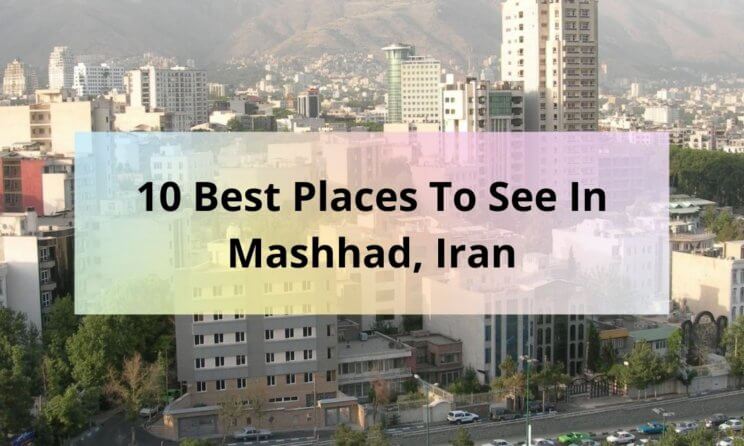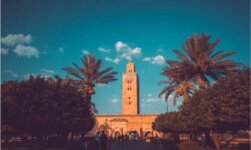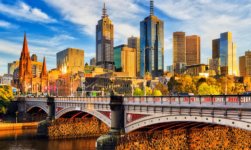
Iran’s second-largest city and religious center, Mashhad, is found in the northeastern province of Khorasan. A historically significant transit town along the Silk Road, Mashhad, which means’ place of martyrdom’, is famous for adapting the grave of Imam Reza, the 8th Shia Imam. Here we investigate the ten best things to see and do whilst seeing this popular pilgrimage destination.
1. Imam Reza Shrine Complex
The Imam Reza Shrine Complex, called the Haram-e Razavi, dominates the town center and requires several visits to appreciate the reach of its magnificence correctly. With seven enormous courtyards, along with a whole area of almost 600,000 square yards, by some measures, it’s the biggest mosque in the entire world. The countless pilgrims who flock to the shrine annually worldwide endow this section of the city with a multicultural air.
There’s a tangible feeling of their religion as people demonstratively mourn the 8th Imam’s martyrdom. Intricate blue tile work and Arabic calligraphy are almost omnipresent across the several iwans and minarets, and also, an impressive gold dome stands thickly over the shrine itself. Non-Muslims are not allow into the inner sanctuary; also (confusingly), just camera phones are allowed.
2. Shrine Complex Museums
The several museums contained inside the shrine complex home a curious combination of displays. Ranging from postage collections commemorating the storming of the U.S. embassy to awards obtained by softball athletes. The carpeting section has some magnificent (in addition to eccentric ) bits, but the most intriguing thing is that the preceding tomb encasement was replaced in 2001.
If you’re eager to find out more about the background of this shrine, search out the ‘Australian Pilgrims Assistance Office’ where favorable workers are Australian with some free literature on the subject. Beware the guards together with feather-dusters that will brush you when you are not dressed modestly enough.
3. Kuh-E Sangi Park
Kuh-e Sangi is Mashhad’s best playground and a fantastic place for a day or early day picnic. A small stream runs through its center, which you can cross by scaling the stone formations or leaping across stepping-stones. Ice cream and other snacks are readily available.
The playground is full of Iranian families evenings, and also boasts exceptional views of the town from its most significant point. If you are lucky, you might encounter groups of older Iranian guys singing national songs at the weekend.
4. Mashhad Bazaar
Mashhad is your saffron-center of the planet, and you will not get a better bargain anywhere besides in the bazaars about Fakaleh Ab square. The spice, which can be gram-for-gram pricier than gold, makes for a superb souvenir or gift. Mashhadi rugs can also be especially revered; therefore, be ready to haggle your way into some fantastic price.
Pilgrimage memorabilia line the roads; getting your portrait superimposed before the Imam’s shrine is a particularly quirky crowd favorite. Visit american airlines reservations to get amazing deals on flight booking with vacation packages to Mashhad, Iran.
5. Boq’eh-Ye Khajeh Rabi
The Boq’eh-ye Khajeh Rabi is an elaborate mausoleum for among those apostles of the Prophet Mohammad, situated in northeast Mashhad, only off Khunjerab Street. Finished in 1612 and touched in the Qajar era, the grave features recognizable Iranian blue tile work, delicate floral themes along a pleasingly symmetrical central dome. It is surround by a big cemetery, where wealthy Iranians can still buy a burial plot.
6. Tomb of Ferdowsi, Tus
Around 40 kilometers out Mashhad is the little city of Tus, which is interchangeable with all the burial sites of Iran’s national poet, Ferdowsi. The writer of this epic poem, the Shahnameh (the Persian Book of Kings), Ferdowsi, died in 1020 A.D., along with his remains rested Tus ever since. The mausoleum’s recent form, a vast stone structure that reproduces the Achaemenid structure, was created in the 1960s and is now the centerpiece of a nearby park.
7. Tomb Of Omar Khayyam, Neishapur
The quatrains of this 12th-century astronomer-poet Omar Khayyam are possibly Khorasan’s most famous exports around the world. Popularised from Edward Fitzgerald’s 19th-century translation, Khayyam is cherishing because of his pithy musings on life, death, and enjoyment.
The present-day mausoleum is just another distinctive modernist structure, constructed in 1963. Situated in Neishapur, only over one hour out of Mashhad, the town also houses the grave of Attar, a Persian Sufi poet, for individuals wanting to tick off each box to the poetry tour.
8. Kang Village
Rural Khorasan has lots of off-the-beaten-track joys to find, often challenging to get by public transportation. But worth the effort of employing a personal cab. The quaint village of Kang, roughly an hour’s drive from Mashhad, is just one incredibly charming example.
Filled with mud-brick homes piled along the foothills of the mountains, here’s a superb chance to research among the very few communities that still exercise this authentically traditional method of life.
Read Also: 10 Best Places To Visit In Hong Kong
9. Radkan Tower
For fans of ancient esoteric structures, it could be well worth the excursion to the village of Radkan to consider the purpose of a 13th-century tower situated nearby. At the summit of a mountain to the west of this village, the cylindrical, cone-top tower was likely a website for carrying astronomical measurements. Seeing Radkan is also a chance to witness some stunning, unspoiled landscapes and older sand destroys.
10. Bazehur Fire Temple
From the tiny village of Robot Sefid, around 70 kilometers southwest of Mashhad, lie. The ruins of this early Bazehur Fire Temple. It is probably built from the Sasanian era, this Zoroastrian spiritual website well maintains but comparatively unknown.
So it could take a little perseverance to create it there. The small, stone-brick stays contrast starkly into the splendor of the Islamic structures across the remainder of the area. A must-see for everybody interested in Iran’s ancient religions.






